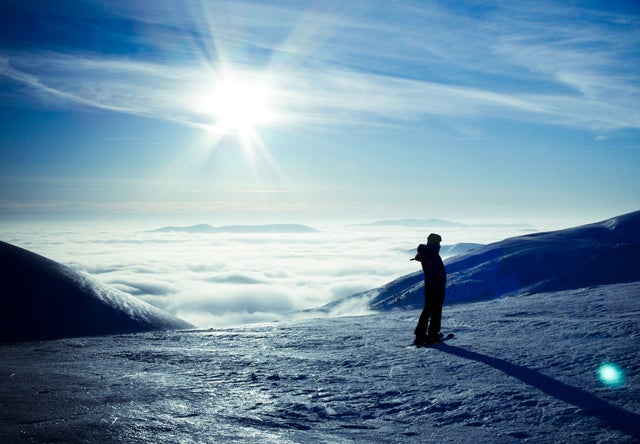Athletes repeatedly train, play, and perform outside—often during the sunniest hours of the day, year round—so it’s not surprising that they’re at an increased risk of skin cancer. Also consider that sweating not only removes sunscreen but reduces the amount (by about 40 percent) of ultraviolet rays necessary to cause sunburn.
Throw in some snow at high elevations, and the odds of damaging your skin escalate even further. “Mountain athletes experience greater amounts of UV as the altitude of the mountain increases,” explains Dr. Brian Adams, director of the Sports Dermatology Clinic at the University of Cincinnati and author of . “At higher altitudes, the atmosphere has less chance of filtering out the damaging rays.” On a bluebird day, sun exposure increases even more because snow reflects up to 100 percent of UV rays. “Someone standing, practicing, competing on snow has two sources of UV radiation: the sun from above and the sun reflected from below,” Adams says.
The takeaway from Adams’ observations: Don’t use a hat as your only method of protection; reapply sunscreen to exposed areas often—at least every two hours; and opt for water resistant, hypoallergenic, oil-free SPF 50. Broad-spectrum is also a good bet; it protects against both ultraviolet A (UVA) and ultraviolet B (UVB) rays.
What else can you do to save your skin? (AAD) recommends seeking shade from 10 a.m. to 4 p.m., but we know you’re not likely to follow those guidelines. Instead, moisturize two times a day. Yes, twice. “Using moisturizers fewer than two times per day is like using your umbrella only half of the time while you are walking in the rain and then being surprised that you got wet,” says Adams, who recommends Cetaphil and Cerave. “Unless you use it all the time, you will get less than maximal results.”
Moisturizing reduces the drying effects of altitude on your skin—at higher altitudes, humidity decreases, and as the air becomes drier, so does your skin. To prevent cracked, flaky skin, slather on the lotion. Take it into the shower, and apply it as soon as you turn off the water, when your pores are open, allowing the moisturizer to really soak in.
Another shower tip: Only use soap on the areas that really need it—armpits, groin, and feet. “Absolutely no soap should hit the arms, legs, back, chest or abdomen,” Adams says. “An athlete only needs water to get clean in those areas.”
For a crash course in how sunscreen works, check out this from the Food and Drug Administration.


